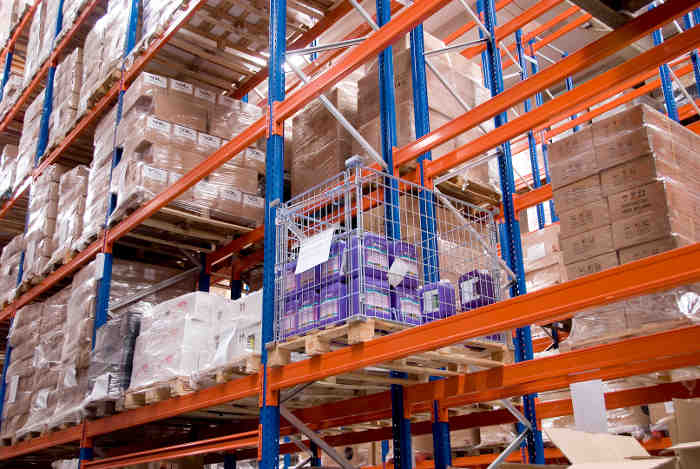
Efficient warehouse storage is a critical component of any successful logistics operation. An efficient warehouse racking system not only maximizes storage space but also improves accessibility, organization, and overall productivity. In this article, we will explore the art of designing a warehouse racking system that is both efficient and effective.
The Importance of Efficient Warehouse Racking
Warehouse racking is more than just a place to store inventory. It plays a crucial role in the efficiency and productivity of a warehouse operation. Here are some key reasons why efficient warehouse racking is essential:
Maximizing Space
- Efficient warehouse racking utilizes vertical space to maximize storage capacity.
- Optimizing space helps warehouses accommodate more inventory without the need for expansion.
Improving Accessibility
- Well-designed racking systems improve accessibility to inventory, reducing picking and retrieval times.
- Easy access to products enhances overall efficiency and reduces labor costs.
Enhancing Organization
- A well-organized racking system makes it easier to categorize and locate inventory.
- Improved organization leads to fewer errors, faster order fulfillment, and better inventory management.
Key Considerations for Designing Warehouse Racking Systems
When designing a warehouse racking system, several factors must be taken into account to ensure its efficiency and effectiveness. Here are some key considerations:
Inventory Profile
- Understand the characteristics of your inventory, such as size, weight, and storage requirements.
- Choose racking systems that are suitable for storing different types of products, such as pallets, boxes, or long items.
Storage Density
- Determine the level of storage density needed based on inventory turnover and space availability.
- Select racking systems that offer high storage density for fast-moving items and lower density for slower-moving inventory.
Accessibility Requirements
- Consider how often each type of inventory needs to be accessed and design the racking system accordingly.
- Utilize a combination of selective, drive-in, or push-back racks to accommodate varying accessibility needs.
Warehouse Layout
- Optimize the warehouse layout to minimize travel time and streamline the flow of goods through the racking system.
- Ensure adequate space for forklifts and other equipment to move freely within the warehouse.
Types of Warehouse Racking Systems
There are several types of racking systems available, each designed to meet specific storage needs and requirements. Some common types include:
Selective Racking
- Ideal for high-selectivity storage of palletized goods.
- Allows direct access to each pallet, making it suitable for fast-moving inventory.
Drive-In Racking
- Provides high-density storage by eliminating aisles and utilizing depth for multiple pallets.
- Suitable for storing large quantities of the same product with low turnover rates.
Cantilever Racking
- Designed for storing long or bulky items, such as pipes, lumber, or furniture.
- Offers easy access to items and adjustable arms for customized storage configurations.
Implementing an Efficient Warehouse Racking System
Once you have selected the appropriate racking system for your warehouse, the next step is to implement it effectively. Here are some tips for implementing an efficient warehouse racking system:
Proper Installation
- Ensure that the racking system is installed correctly and according to manufacturer specifications.
- Regularly inspect and maintain the racking system to prevent damage and ensure safety.
Employee Training
- Train warehouse staff on proper racking system usage, including loading, unloading, and safety procedures.
- Provide ongoing training to familiarize employees with the racking system and optimize its use.
Regular Maintenance
- Implement a regular maintenance schedule to inspect and repair any damaged or worn components of the racking system.
- Replace damaged or defective parts to maintain the integrity and safety of the racking system.
Conclusion
Designing an efficient warehouse racking system requires careful planning, consideration of various factors, and the selection of the right racking system for your specific needs. By maximizing space, improving accessibility, and enhancing organization, a well-designed racking system can significantly impact the efficiency and productivity of your warehouse operation.